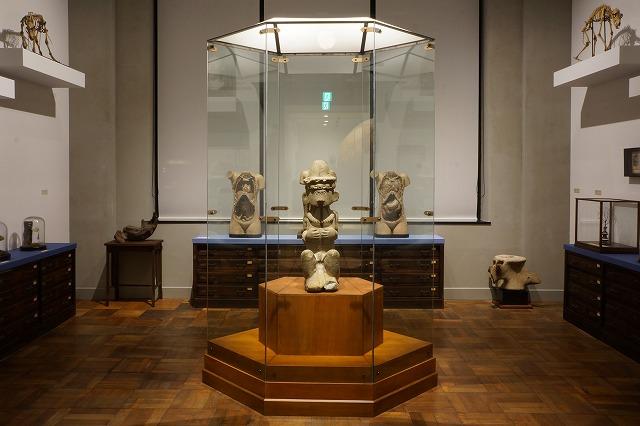JP Tower Museum INTERMEDIATHEQUE
Statue of a Chief (gowe)
19th Century / Niha Population / North-west of Nias Island, Lidano Lahömi basin (Indonesia) / Stone / Former collection of the Barbier-Mueller Museum, Geneva / Quai Branly Museum
概要
The Nias Island, located off Sumatra in the Indian Ocean, offered to the 19th-Century visitor a stunning variety of stone sculptures, in regard to its relatively modest dimension (120 km long and 40 km wide). The architecture, wood and stone sculpture can be stylistically divided into three regions: the North, the Centre and the South. The hilly topography of the island has long maintained these three regions relatively isolated from each other. In the end of the 19th Century, Italian geographer Elio Modigliani brought back from his trip photographs of a village chief from the Southern region. These help us better understand how headdresses and ornaments were worn, and how they were combined. This stone sculpture represents a village chief seated with his hands joined on his chest. He bears his rank’s insignia: a nifatali twisted necklace initially in gold, a long earring and a bracelet around his wrists. The ornamented headband girding his forehead under a conic headdress indicates that the finery required by his rank as well as the related feasts have well been realized. The gesture attracting our attention to his chest signifies that this chief is “like a mother to his people”, counterbalancing the virility expressed by his phallus. The Niha society is governed by feasts of merit which allow for the acquisition of honorary titles. This social process stimulated competition among chiefs, and was a powerful catalyst for the realization of sculptures. Realized in honor of a chief, this gowe perpetuates the presence and the spirit of an ancestor.

